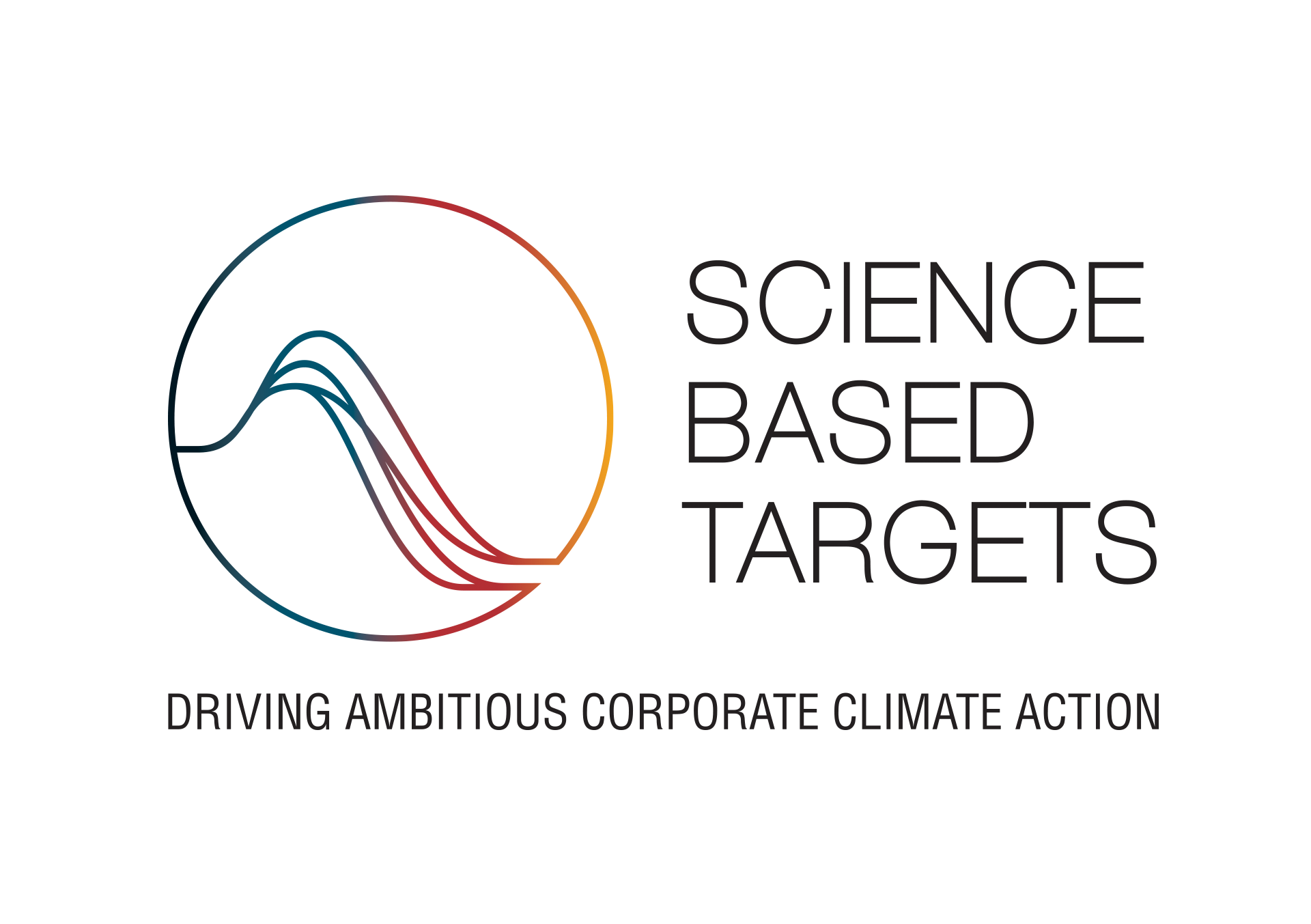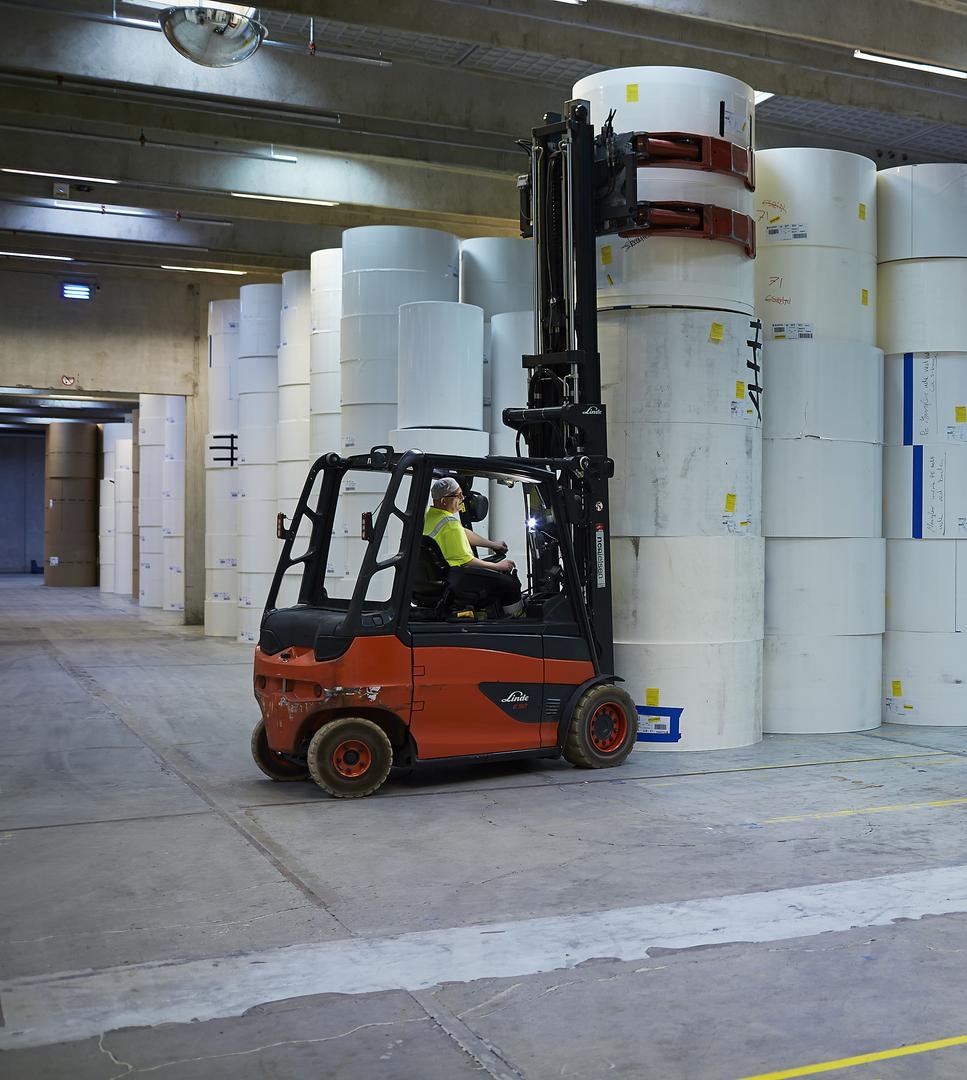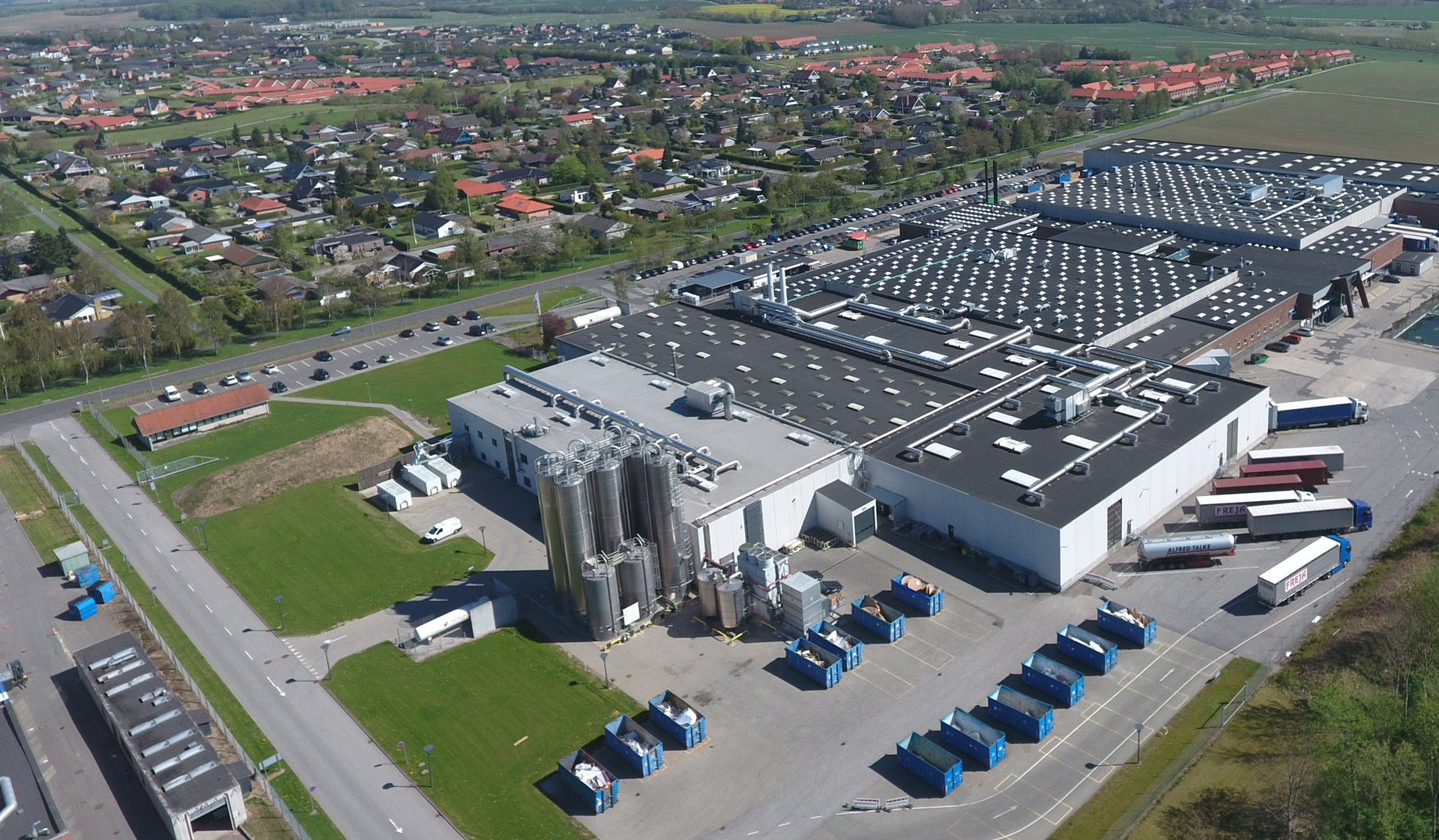Emissions and climate change
Climate change is caused by the emission of greenhouse gases in the atmosphere. Since pre-industrial times, human emissions of carbon dioxide (CO₂), nitrous oxide, methane, and others has created a spike of 1° in global temperatures.
Since 2008 we have reduced the greenhouse gas emissions from our operations and supply chain. A reduction of 70% emissions has been achieved from 2008 to 2018 from a number of reduction initiatives including the increased use of renewable electricity.
Elopak is committed to keeping global warming below 1,5°C. We declare this commitment as one of the first companies to pledge to cut greenhouse gas emissions in line with the strict criteria set by Science Based Targets (SBT) initiative.

Science Based Targets
Science Based Targets is an initiative which sets guidelines to scientifically calculate targets for companies’ contribution to decarbonization in line with the Paris Agreement. Originally, this agreement set out keeping the global average temperature increase below 2°C compared to pre-industrial temperatures. However, the SBT initiative launched new guidelines in 2019 for target-setting in line with the 1.5°C target.
Scope 1
Natural gas, propane, heating oil, waste incineration, wood
Energy consumption accounts for a big part of Elopak’s internal CO2e emissions, and key priorities are therefore to reduce the energy use and to choose low-carbon energy sources. We are focusing on two key strategies on the path to a renewable energy future. These include undertaking energy efficiency measures across the company and reducing emissions associated with the purchase of energy.
Over the past ten years, Elopak has improved its energy efficiency. Since 2008, energy used per produced carton has been reduced by 20%. Further energy optimizing projects will be initiated as part of our sustainability program.
Electric heating substitutes fossil fuel
A reduction of approximately 290 tonne CO2e per year has been achieved at our Aarhus facility in Denmark, by substituting fossil fuel with electric energy on one of the production converters.
The drying process in the converter was previously done by a heat exchanger run by a stoker burner, relying on mainly thermal oil and some skiving waste. In 2020 a new electric heat exchanger was installed on the converter, and the old thermal oil system was removed. A briquetting press was also installed to dispose the skiving waste that previously was used to fuel the stoker burner. The scrapping of the old burner has eliminated the need to purchase around 170.000 liters of heating oil per year.

Scope 2
Electricity, district heating
Renewable electricity means sourcing from renewable sources such as hydro power or wind power. Emissions for renewable electricity are considerably lower than emissions for electricity generated from non-renewable fossil sources.
To source renewable electricity, companies can either directly invest in new renewable generation capacity, or source renewable electricity by using certificate systems. Elopak has chosen the latter and is purchasing energy certificates, in Europe and North America, that covers 100% of our electricity consumption.
For European sites the Guarantees of Origin are purchased from the hydropower plant in Norway. For North America (Canada and USA), we have purchases Green-e® certified RenewableEnergy Certificates (RECs), originating from wind farms in North America.
RE100
In 2015, Elopak became the first packaging company and the first Norwegian company to join the RE100 campaign, committing to sourcing 100% renewable electricity from 2016 onwards for all fully owned production units and offices worldwide.
The RE100 Annual Report for 2020 states that 53 of the RE100 members (app. 20%) have announced reaching 100% renewable electricity.
Elopak are proud to have sourced 100% renewable electricity since 2016, and to be one of the relatively few companies in the RE100 campaign that reached this goal already five years ago.

Case
Moving to LED
Our manufacturing site in Aarhus, Denmark has completed a turnkey project to switch to modern, intelligent LED lighting. The result has enabled Aarhus, one of our main European sites, to reduce its power consumption by 78,4% compared to the consumption of the old light installation.
The investment was made to replace the old lighting installation which generated significantly higher energy and maintenance costs. Over 50 light sources were replaced with the help of two local companies in Denmark, Atea and Green Light. All components were installed in accordance with specifications from Green Light by week 49, 2020. The switch has enabled Aarhus a reduction in energy consumption for lighting of approximately 1 220 MWh per year. This corresponds to an annual emission reduction of approximately 207 tonnes CO2e.
Scope 3
Business travel, transport, raw materials and filling machines
Emissions in scope 3 are emissions across all the product value chain that are emitted outside the reporting company. They are actually emissions included in someone else’s scope 1 and 2, but they occur because the product enters the market. A value chain life cycle approach is taken to ensure that all emissions related to products is included.
After we analyzed Elopak’s scope 3 emissions for the 2017 baseline, it was clear that business travel, transport, raw materials and filling machines in operation, were the most relevant categories to report in our Science Based Targets approach
Car fleet emission reductions
Our colleagues in Spain are reducing emissions by replacing fleet cars with hybrid and low emission cars. In 2020 a total of 18 cars were replaced, enabling a 70% reduction of emissions. The cars are used extensively by market unit personnel and field service engineers supporting customers at their sites. Further changes will be made to the rest of the fleet in 2021 and 2022 with more cars being switched to greener vehicles such as plugin hybrids and hybrid motors.
Business travels
In 2020 Elopak had a large reduction in CO2e emissions related to business travel and this is mainly due to the Covid-19 pandemic and global travel restrictions. Elopak employees have adopted well to the new normal with online meetings and less business travel. Working online is beneficial in many ways, it is time saving for the employee, it is economically favorable for Elopak and it reduces CO₂e emissions from transport. Elopak will encourage employees to choose online meetings instead of physical meetings, when possible, also after the Covid-19 pandemic.
In 2019 a new business travel management system was implemented at almost all Elopak sites. The new system makes it possible to extract detailed reports on the emissions from flights from one centralized source that is directly linked to the flight booking system. The new reports are more accurate than previous reports because they are more detailed and consider aspects such as if the flight ticket was business class or economy class. There was also some over-reporting of CO₂e emissions from flights in previous reports, which is now avoided.
Transport
Elopak has had a 7% increase in scope 3 emissions from third party transport reported since 2017. The increased production in our production sites has led to the increased transport of raw materials and products, which naturally leads to increased emissions.
Despite the overall increase in emissions, we have had improvements such as less emissions per tonne shipped and improved fill rate on trucks. As the internal focus on these goals has also improved, the solutions and choices are becoming more visible within Elopak.
We ask all our transport suppliers to comply with certain environmental requirements. Currently we are working on redefining and improving these, and we aim to use Ecovadis as a tool to do sustainability assessments of suppliers.
We aim to achieve greenhouse gas reductions across our entire value chain by:
- Striving to ship full units (fill rate) and reduce urgencies and van transport.
- Supporting category managers in logistics & transport choices, including requirements on EURO class of trucks.
- Internal information on optional transport modes or fuel types – e.g., from road to sea transport
- Including estimated environmental impact in key decision calculations
New technology and the availability of solutions will provide new opportunities for sustainability achievements across our logistics. The joint focus across the value chain will be an important success factor for these initiatives.
We see further opportunities for improvements such as finding more efficient measures, selecting better partners and transport modes. Plus supporting our organization with information on available transport options i.e., from road to rail or sea, or the use of larger trailers.
Raw Materials
Purchased goods and services is a category that contributes to scope 3 emissions. Specifically, these are related to the extraction and production of the raw materials in our cartons.
Since 2017 Elopak has had a 15% increase in the scope 3 emissions from purchased goods and services. The reason for this increase is mainly the increase in sales of cartons and closures since 2017. Elopak aims to work with raw material suppliers to reduce emissions from raw materials, as well as increasing use of renewable raw materials, which naturally will contribute to this target.
Carbon footprint of products
The carbon footprint of products derives from the production of the raw materials (paperboard, polyethylene, aluminum etc.). Within our own operations, this includes final conversion, and all transportation up to the delivery at Elopak’s customers’ gate. To calculate our carbon footprint, we include the weight of each raw material and relevant emission factors from suppliers or other sources.
Filling machines
Elopak provides filling machines to many of the world’s leading beverage manufacturers. Our filling machine platform features a space-saving, compact design and fill up to 12-14 000 cartons per hour in different formats and hygiene classes. With minimal manpower requirements including the option of fully automatic material loading system, machines have low utility consumption and operating costs.
Elopak’s latest specially designed filler valve extends the range of fillable products, enabling customers to launch more sensitive and highly viscous products like smoothies, soups and puddings. Further, the option of running two different closure types on one filling machine was introduced, enabling the customers an efficient transfer to light-weight, sustainable closure types.
For our customers, we offer research and development support, including comprehensive after sales services, technical training and maintenance support. We know that to build and maintain a modern filling operation is a complex task. Not least it involves the installation of filling and materials handling equipment, plus a network of product tubing and process equipment. Part of Elopak’s scope 3 is the use of sold and leased filling machines at customer sites and is included in the SBT reporting.
In 2020 total emissions for filling machines were reduced, partly due to fewer machines being placed in the market. The Covid-19 pandemic lead to fewer machines sold. However, the new machine models have lower emissions than the older ones, and by replacing old machines, we see a decrease in filling machine emissions of 5% per machine from 2017 to 2020.
